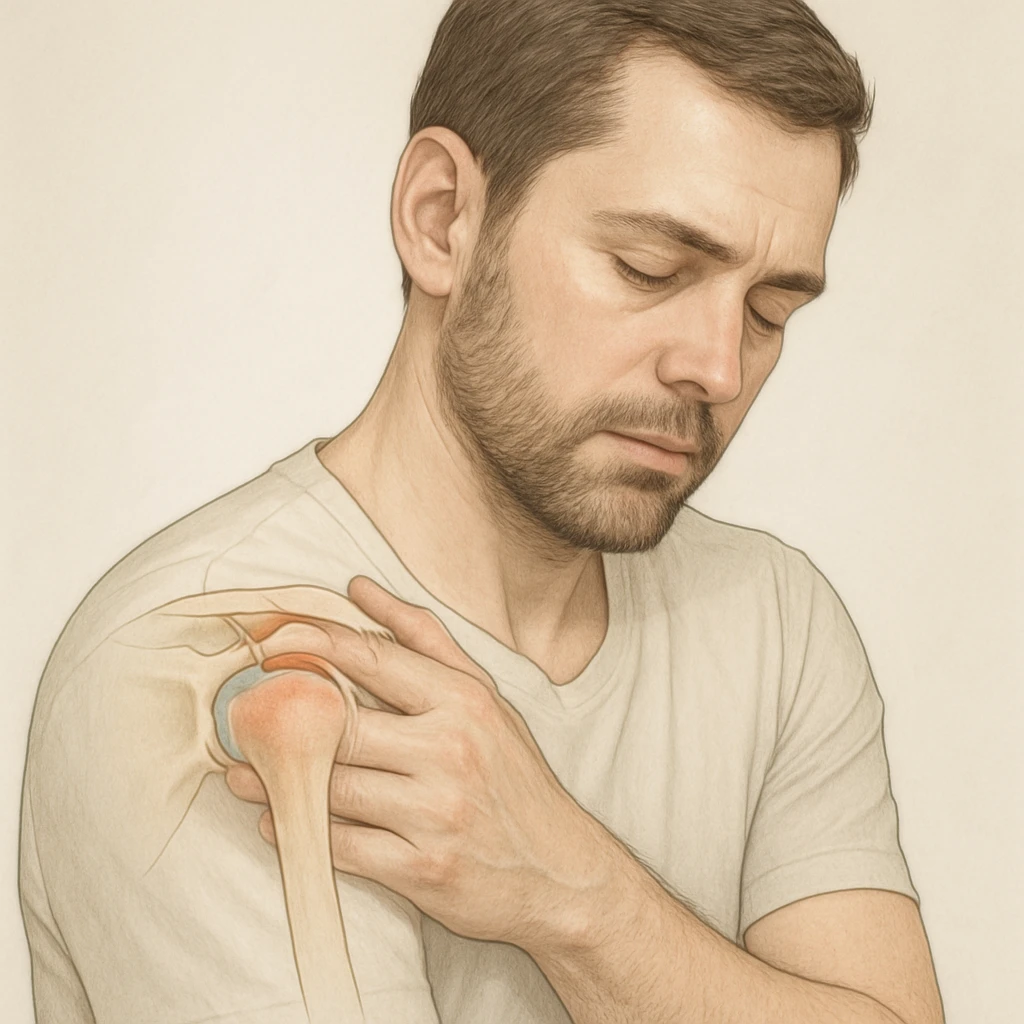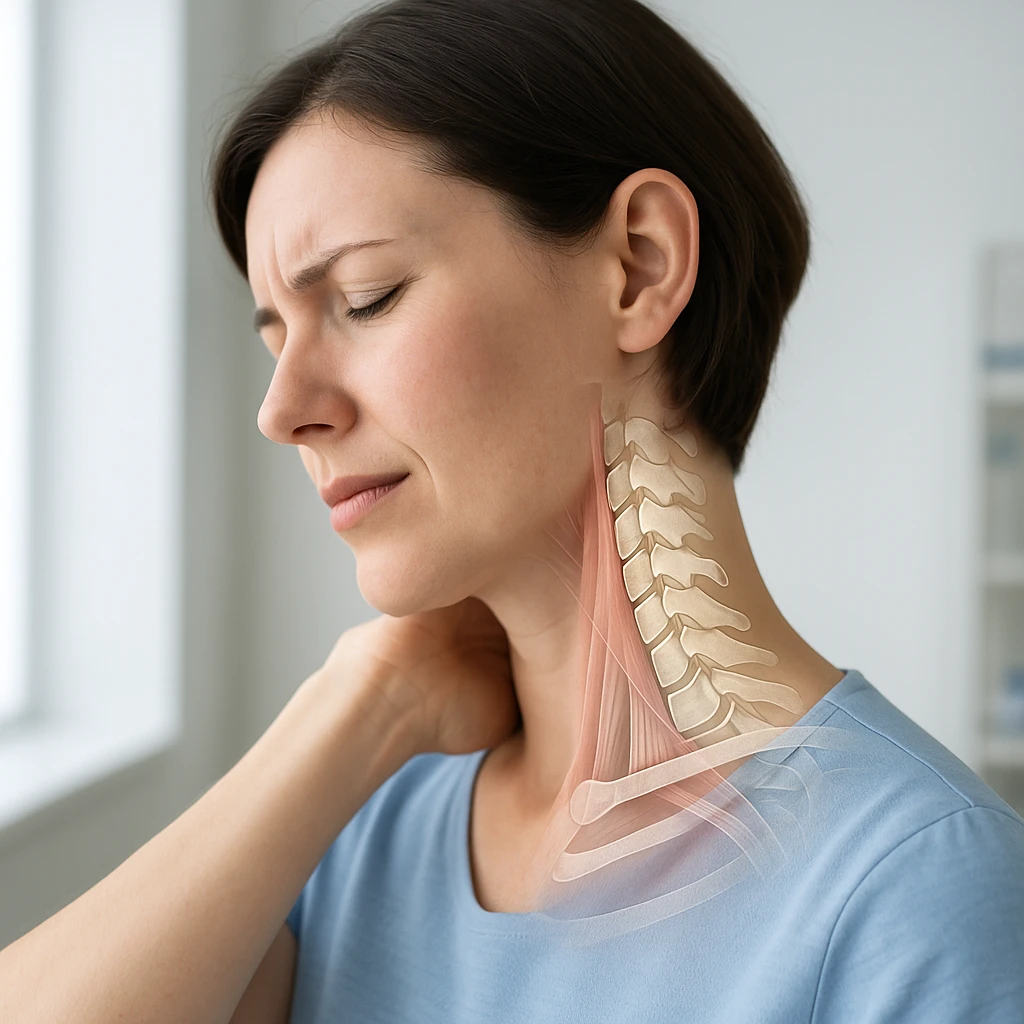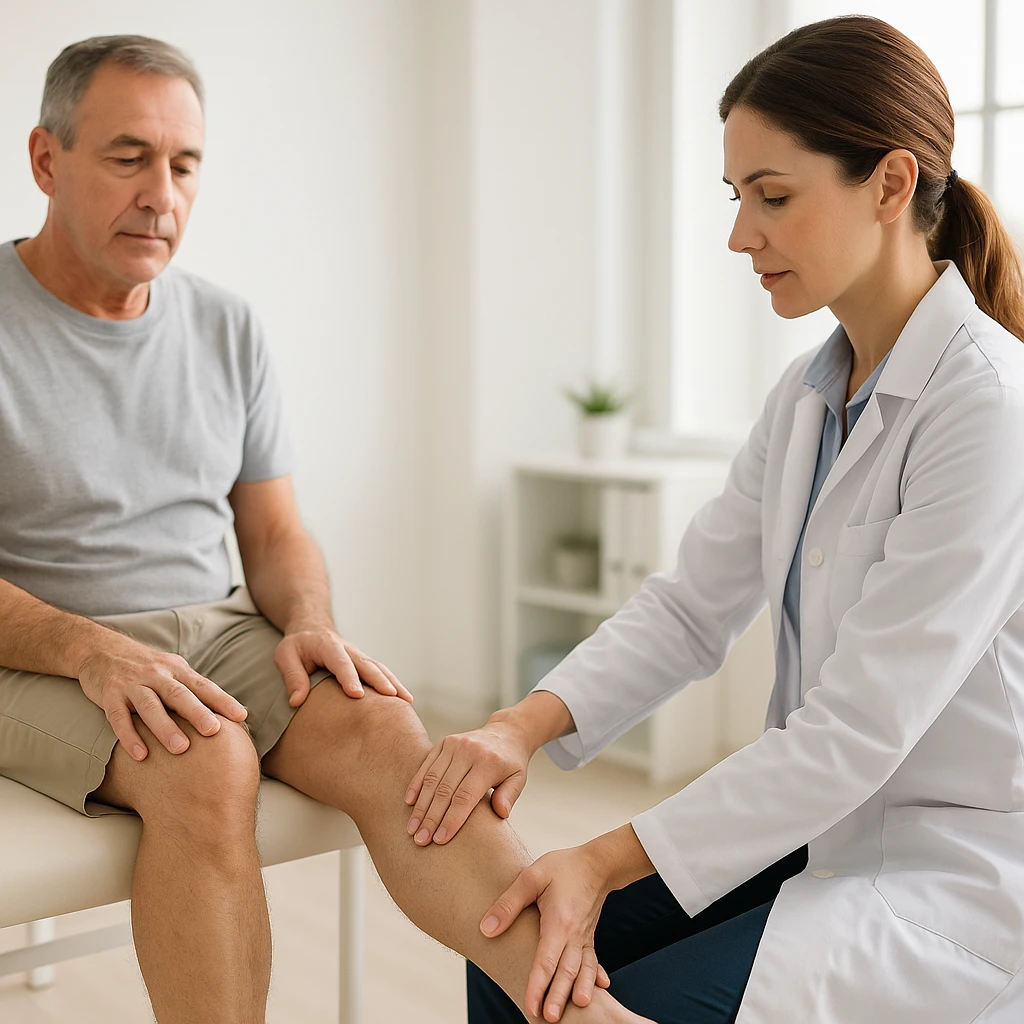Tennis Elbow Diagnosis, Treatment, and Prevention Explained
Tennis Elbow: Understanding the Condition and Who It Affects
What Is Tennis Elbow?
Tennis elbow, medically known as lateral epicondylitis, is a common condition that causes pain on the outer part of the elbow. The discomfort develops where the forearm tendons attach to the bony prominence of the elbow. Despite its name, the condition does not only affect tennis players. It results from repetitive strain or overuse of the forearm muscles that control wrist and hand movements, leading to irritation and small injuries within the tendon tissue.
People with tennis elbow often notice aching or burning pain when lifting, gripping, or twisting objects. These movements stress the same tendons involved in everyday tasks such as turning a doorknob, using tools, or typing on a keyboard. Over time, repetitive strain can make even simple actions uncomfortable.
How Common Is Tennis Elbow?
Tennis elbow affects about 1-3% of adults, making it one of the most frequent causes of elbow pain. It is particularly common among people in their 30s to 50s, though it can appear at any age. Because it develops gradually from overuse rather than a single injury, many people may not realize the source of their discomfort until daily activities become limited.
While the condition can be frustrating, its outlook is very positive. Most individuals recover fully with time and conservative treatment, especially when they address the underlying strain on the affected tendons.
Who Is at Risk?
Tennis elbow typically develops in people who perform repetitive wrist extension or gripping movements. These motions place repeated stress on the muscles and tendons of the forearm, eventually causing small tendon injuries. Common activities and occupations that may increase risk include:
- Jobs requiring frequent lifting, gripping, or tool use (e.g., carpentry, plumbing, painting, assembly-line work)
- Sports that involve repetitive arm motions, such as tennis or squash
- Everyday repetitive tasks like typing, cooking, or using hand tools
Recreational or professional athletes who use racquets are also prone to developing the condition due to the high load placed on the forearm extensors. However, many people with tennis elbow have never played sports; the condition can arise from any repeated strain that overworks these muscles. Recognizing early symptoms and adjusting activities can help reduce discomfort and support healing.
What Causes Tennis Elbow Pain
Anatomy of the Outer Elbow
The outer part of the elbow, known as the lateral side, serves as the attachment site for several muscles that extend the wrist and fingers. These muscles connect to the bone through strong, fibrous tissues called tendons. One key tendon involved in tennis elbow is the extensor carpi radialis brevis (ECRB). This tendon anchors the forearm muscles to a bony prominence on the outer elbow called the lateral epicondyle.
- Lateral epicondyle: the bony bump on the outer elbow where tendons attach.
- Extensor carpi radialis brevis (ECRB): the tendon most commonly affected in tennis elbow.
- Forearm extensors: muscles that straighten the wrist and fingers, connected to the elbow through the ECRB tendon.
When the wrist or hand is used repeatedly for gripping, lifting, or twisting motions, the ECRB tendon experiences strain at its attachment point. Over time, this repeated stress can cause small areas of wear and disruption in the tendon fibers, leading to localized pain and tenderness at the outer elbow.
Topic Details
Although tennis elbow pain may feel similar to inflammation, research shows that it is actually a form of tendinopathy – a process of tendon degeneration rather than true inflammation. Instead of swelling caused by immune cells, the tendon fibers gradually weaken and develop microscopic damage. These changes reduce the tendon’s ability to absorb load and transmit force efficiently.
As the tendon degenerates, the surrounding tissue may become sensitive, and even light activity can trigger discomfort. The process often develops slowly, which is why people may not recall a single injury that started their symptoms. Understanding that tennis elbow is degenerative helps explain why recovery focuses on gradually rebuilding tendon strength rather than simply reducing inflammation.
Recognizing Tennis Elbow Symptoms and Diagnosis
Typical Symptoms
Tennis elbow usually begins with a dull ache or tenderness on the outer part of the elbow, which can gradually increase over time. The discomfort typically worsens when gripping objects, lifting, or performing activities that involve wrist or finger extension. Everyday actions such as turning a key, holding a cup, or shaking hands may become uncomfortable or painful.
- Pain on the outer side of the elbow that worsens with gripping or lifting
- Tenderness over the lateral epicondyle
- Discomfort spreading slightly down the forearm
- Weakness when grasping or lifting objects
How Tennis Elbow Is Diagnosed
Doctors typically diagnose tennis elbow based on the patient’s medical history and a physical examination. During the exam, they may apply gentle pressure over the outer elbow and ask the patient to perform movements such as extending the wrist or fingers against resistance. Pain during these actions supports the diagnosis.
In most cases, imaging tests such as X-rays or MRI scans are not required. They are used only when symptoms are severe, prolonged, or when another condition needs to be ruled out. The diagnosis remains primarily clinical, relying on the pattern of pain, location of tenderness, and a consistent history of repetitive forearm use.
Ruling Out Other Causes of Elbow Pain
Several other conditions can cause similar pain around the outer elbow, so part of the evaluation involves ruling them out. Common mimics include:
- Radial tunnel syndrome: nerve irritation that can mimic tennis elbow symptoms
- Bursitis: inflammation of the fluid-filled sac near the joint
- Referred pain: discomfort originating from the neck or shoulder
By considering these alternatives, healthcare providers ensure an accurate diagnosis and appropriate management plan. Recognizing the typical features of tennis elbow and understanding its distinct pattern of pain help both patients and clinicians address the problem effectively and avoid unnecessary testing.
Tennis Elbow Treatment: From Rest to Rehabilitation
Conservative Treatment
The majority of people with tennis elbow improve with conservative care, which focuses on reducing strain to allow the tendon to heal. The first step is usually activity modification – identifying and adjusting tasks that aggravate the pain, such as heavy lifting, repetitive wrist motion, or strong gripping. Temporary rest or lighter use of the arm gives the tendon time to recover while maintaining general movement of the joint.
- Modify activities that trigger pain (e.g., lifting, gripping, twisting)
- Allow short periods of rest while keeping the arm mobile
- Use supportive aids like forearm straps or splints to reduce tendon strain
- Gradually reintroduce activity once symptoms improve
Supportive devices such as forearm straps, braces, or splints can help decrease stress on the affected tendon during activity. These aids are typically used for short periods to reduce load on the forearm muscles and allow for more comfortable movement. Gradual reintroduction of activities, guided by symptom response, helps prevent recurrence of pain.
Physical Therapy and Rehabilitation
Structured exercise programs are a central part of recovery. Rehabilitation focuses on restoring strength, flexibility, and endurance in the muscles that extend the wrist and fingers. Programs are designed to progressively load the forearm extensors to improve the tendon’s tolerance to everyday demands.
- Controlled wrist extension and grip-strengthening exercises
- Stretching to maintain flexibility in the wrist and forearm
- Progressive loading programs to build tendon resilience
Treatment also targets specific muscle impairments associated with tennis elbow. By addressing weakness, imbalance, or stiffness in the forearm and wrist, rehabilitation helps restore normal mechanics and supports lasting recovery. Consistent participation in these programs plays an important role in reducing symptoms and preventing chronic pain.
Medication and Injection Therapies
For short-term symptom relief, nonsteroidal anti-inflammatory drugs (NSAIDs) are often used to reduce pain and improve comfort during rehabilitation. These medications may be taken orally or applied topically. However, because tennis elbow is primarily a degenerative rather than inflammatory condition, medications serve mainly as a temporary measure to ease discomfort rather than as a long-term solution.
| Treatment Type | Purpose | Considerations |
|---|---|---|
| NSAIDs | Short-term pain relief | Limited role; used mainly for comfort |
| Corticosteroid injections | Temporary pain reduction | Mixed evidence; not always long-lasting |
| Biologic or alternative injections | Potential healing aid | No clear consensus on effectiveness |
Injections, such as corticosteroids or other biological treatments, have been studied for tennis elbow, but the evidence remains mixed. No single type of injection has shown clear superiority or consistent benefit. For most patients, conservative care with exercise and load management remains the cornerstone of treatment.
When to See a Doctor
It is important to seek medical evaluation if pain persists beyond several weeks, interferes with daily activities, or is accompanied by weakness, swelling, or numbness. A healthcare professional can confirm the diagnosis and help guide an individualized treatment plan.
Tennis Elbow Surgery, Recovery, and Long-Term Outlook
When Surgery Is an Option
Most people with tennis elbow recover fully without surgery, typically within a year of consistent nonoperative care. Surgery is considered only when pain and functional limitations persist after six to twelve months of well-guided rehabilitation and other conservative treatments. In these cases, the goal of surgery is to remove or repair the diseased tendon tissue that has failed to heal on its own.
- Considered after 6-12 months of failed conservative care
- Targets damaged tendon tissue at the common extensor origin
- Aims to remove or repair diseased tissue and stimulate healing
- Reserved for chronic or persistent cases
The procedure focuses on the common extensor origin – the point where the forearm tendons attach to the outer elbow. Surgeons may remove damaged fibers, stimulate healing of the remaining healthy tissue, or reattach the tendon if necessary. While the operation is generally successful, it is reserved for the small percentage of patients with chronic or refractory symptoms.
Recovery and Prevention
Recovery after surgery is gradual and involves a period of rest followed by structured rehabilitation. The early phase focuses on protecting the surgical site while maintaining gentle range of motion. Over time, physical therapy introduces strengthening and stretching exercises to restore flexibility and load tolerance in the forearm muscles. Complete recovery may take several months, depending on individual healing and adherence to rehabilitation.
- Initial rest and protection of the surgical area
- Progressive physical therapy with stretching and strengthening
- Load modification to prevent overuse
- Gradual return to normal activity
Prevention of recurrence centers on load modification – recognizing and adjusting activities that place excessive stress on the elbow. Using proper technique in sports or work tasks, pacing repetitive motions, and incorporating regular strengthening and flexibility exercises help protect the tendon during daily use.
Living Well After Tennis Elbow
Even after symptoms resolve, maintaining good forearm strength and ergonomic habits supports long-term tendon health. People who recover from tennis elbow are encouraged to continue the exercises learned during rehabilitation as part of their routine. Education about proper movement patterns, balanced muscle use, and gradual load increases can reduce the risk of recurrence.
The overall outlook for tennis elbow is highly positive. Most patients regain full function and return to normal activities with appropriate treatment and patience. Understanding the recovery process and following preventive strategies can help ensure lasting relief and confidence in using the arm again.
Frequently Asked Questions About Tennis Elbow
- Does tennis elbow only affect athletes?
- No. While the condition got its name from the sport, most cases occur in people who perform repetitive wrist or hand movements at work or home.
- How long does it usually take for tennis elbow to heal?
- Recovery varies, but most people improve within 6 to 12 months of consistent non-surgical treatment and exercise-based rehabilitation.
- What activities can make tennis elbow worse?
- Repetitive gripping, lifting, or twisting motions-such as using tools, typing, or racquet sports-can aggravate symptoms if done without rest or proper form.
- Can rest alone cure tennis elbow?
- Rest can reduce pain temporarily, but complete recovery usually requires gradual strengthening and rehabilitation to restore tendon resilience.
- Is swelling common with tennis elbow?
- Swelling is uncommon. The condition involves tendon degeneration, not true inflammation, which means visible swelling is rarely present.
- When should someone see a doctor for elbow pain?
- If pain lasts more than a few weeks, limits daily activity, or causes weakness or numbness, medical evaluation is recommended.
- Are braces or straps effective for tennis elbow?
- Forearm braces or straps can help reduce strain on the affected tendon during activity, especially in the early stages of recovery.
- Can exercises prevent tennis elbow from coming back?
- Yes. Continuing stretching and strengthening exercises for the forearm muscles helps maintain tendon health and reduces the risk of recurrence.
- Is surgery often needed for tennis elbow?
- Surgery is rarely necessary and is considered only when symptoms persist after 6 to 12 months of conservative management.
- Can changing work habits help with recovery?
- Adjusting ergonomics, reducing repetitive strain, and pacing tasks can ease stress on the tendon and support long-term recovery.













